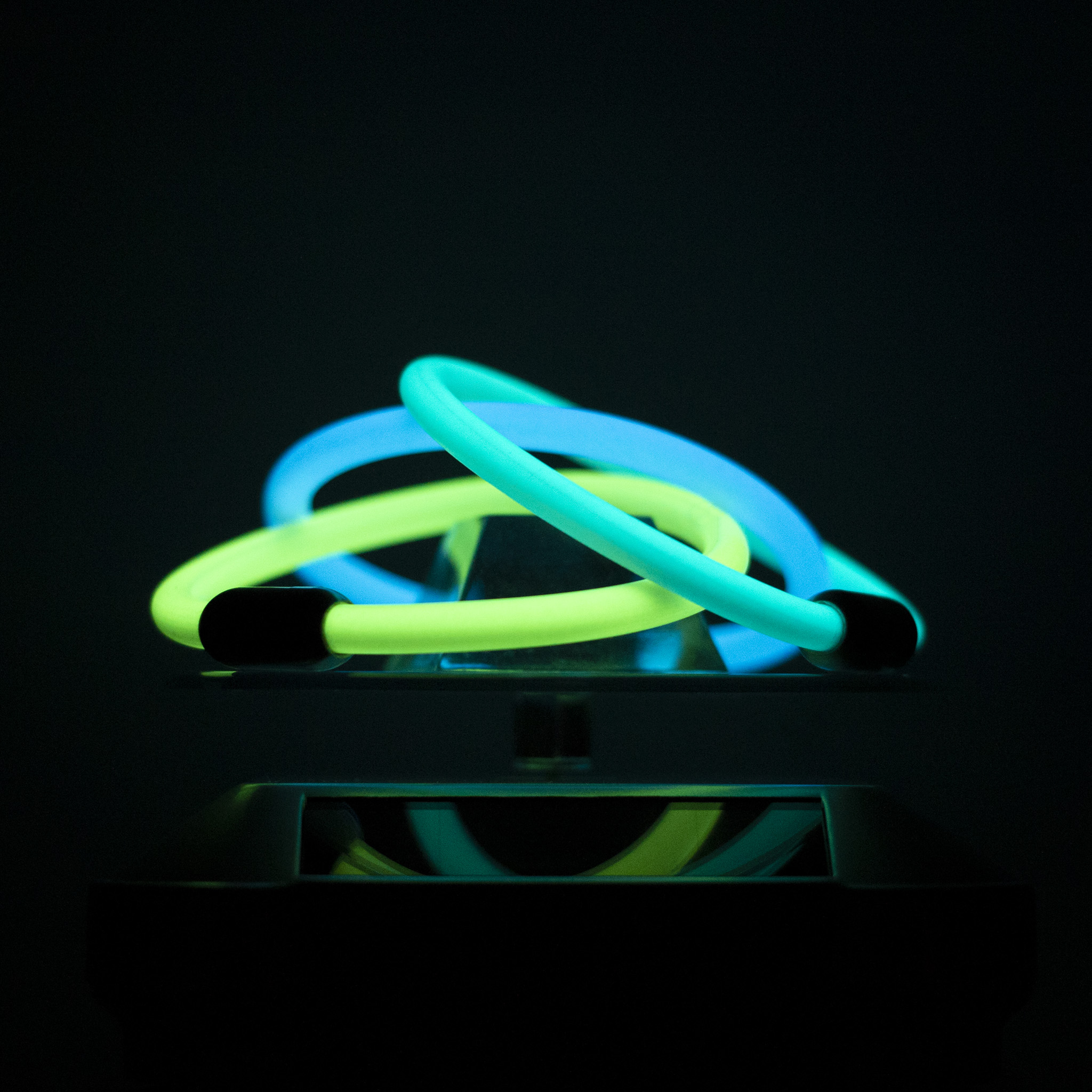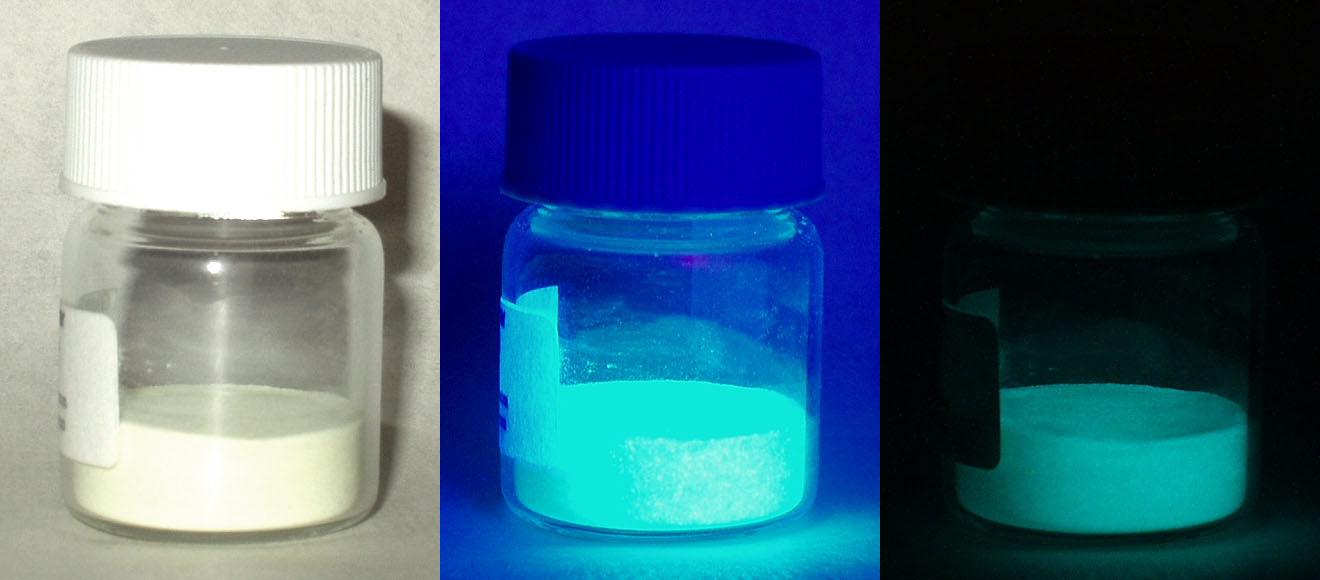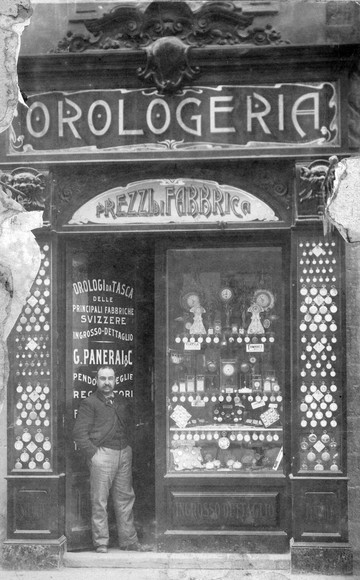|
Super-LumiNova
Super-LumiNova is a brand name under which strontium aluminate–based non-radioactive and nontoxic photoluminescent or afterglow pigments for illuminating markings on watch dials, hands and bezels, etc. in the dark are marketed. This technology offers up to ten times higher brightness than previous zinc sulfide–based materials. Super-LumiNova is based on LumiNova pigments, invented in 1993 by Nemoto & Co., Ltd. of Japan as a safe replacement for radium-based luminous paints. Nemoto & Co. was founded in December 1941 as a luminous paint processing company and has supplied paint to the watch and clock industry for over 70 years. Besides being used in timepieces, Super-LumiNova is also marketed for application on: * Instruments: scales, dials, markings, indicators etc. * Scales: engravings, silkscreen-printing * Aviation instruments and markings * Jewelry * Safety- and emergency-panels, signs, markings * Aiming posts * Various other parts These types of phosphorescent pigment ... [...More Info...] [...Related Items...] OR: [Wikipedia] [Google] [Baidu] |
Lume
Lume is a short term for the luminous phosphorescent glowing solution applied on watch dials. There are some people who "relume" watches, or replace faded lume. Formerly, lume consisted mostly of radium; however, radium is radioactive and has been mostly replaced on new watches by less bright, but less toxic compounds. Common pigments used in lume include the phosphorescent pigments zinc sulfide and strontium aluminate Strontium aluminate is an aluminate compound with the chemical formula (sometimes written as ). It is a pale yellow, monoclinic crystalline powder that is odourless and non-flammable. When activated with a suitable dopant (e.g. europium, written .... Use of zinc sulfide for safety related products dates back to the 1930s. However, the development of strontium oxide aluminate, with a luminance approximately 10 times greater than zinc sulfide, has relegated most zinc sulfide based products to the novelty category. Strontium oxide aluminate based pigments are now u ... [...More Info...] [...Related Items...] OR: [Wikipedia] [Google] [Baidu] |
Strontium Aluminate
Strontium aluminate is an aluminate compound with the chemical formula (sometimes written as ). It is a pale yellow, monoclinic crystalline powder that is odourless and non-flammable. When activated with a suitable dopant (e.g. europium, written as ), it acts as a photoluminescent phosphor with long persistence of phosphorescence. Strontium aluminates exist in a variety of other compositions including (monoclinic), ( cubic), (hexagonal), and (orthorhombic). The different compositions cause different colours of light to be emitted. History Phosphorescent materials were discovered in the 1700s, and people have been studying them and making improvements over the centuries. The development of strontium aluminate pigments in 1993 was spurred on by the need to find a substitute for glow-in-the-dark materials with high luminance and long phosphorescence, especially those that used promethium. This led to the discovery by Yasumitsu Aoki (Nemoto & Co.) of materials with luminance ap ... [...More Info...] [...Related Items...] OR: [Wikipedia] [Google] [Baidu] |
Lumibrite
Lumibrite (SrAl2O4 + Eu + Dy - Strontium aluminate doped with Europium and Dysprosium) is a luminous paint used on some models of Seiko, Citizen, Lorus, and Pulsar watches. This is a new (in 1995) kind of luminescent paint that glows brighter for longer than the previous generation of luminescent paints, and is environmentally friendly (non radioactive). See also *Luminous paint *Super-LumiNova Super-LumiNova is a brand name under which strontium aluminate–based non-radioactive and nontoxic photoluminescent or afterglow pigments for illuminating markings on watch dials, hands and bezels, etc. in the dark are marketed. This technolog ... References Brand name materials {{Industry-stub ... [...More Info...] [...Related Items...] OR: [Wikipedia] [Google] [Baidu] |
Phosphorescent
Phosphorescence is a type of photoluminescence related to fluorescence. When exposed to light (radiation) of a shorter wavelength, a phosphorescent substance will glow, absorbing the light and reemitting it at a longer wavelength. Unlike fluorescence, a phosphorescent material does not immediately reemit the radiation it absorbs. Instead, a phosphorescent material absorbs some of the radiation energy and reemits it for a much longer time after the radiation source is removed. In a general sense, there is no distinct boundary between the emission times of fluorescence and phosphorescence (i.e.: if a substance glows under a black light it is generally considered fluorescent, and if it glows in the dark it is often simply called phosphorescent). In a modern, scientific sense, the phenomena can usually be classified by the three different mechanisms that produce the light, and the typical timescales during which those mechanisms emit light. Whereas fluorescent materials stop emitti ... [...More Info...] [...Related Items...] OR: [Wikipedia] [Google] [Baidu] |
Phosphorescence
Phosphorescence is a type of photoluminescence related to fluorescence. When exposed to light (radiation) of a shorter wavelength, a phosphorescent substance will glow, absorbing the light and reemitting it at a longer wavelength. Unlike fluorescence, a phosphorescent material does not immediately reemit the radiation it absorbs. Instead, a phosphorescent material absorbs some of the radiation energy and reemits it for a much longer time after the radiation source is removed. In a general sense, there is no distinct boundary between the emission times of fluorescence and phosphorescence (i.e.: if a substance glows under a black light it is generally considered fluorescent, and if it glows in the dark it is often simply called phosphorescent). In a modern, scientific sense, the phenomena can usually be classified by the three different mechanisms that produce the light, and the typical timescales during which those mechanisms emit light. Whereas fluorescent materials stop emitt ... [...More Info...] [...Related Items...] OR: [Wikipedia] [Google] [Baidu] |
Radium Dial
Radium is a chemical element with the symbol Ra and atomic number 88. It is the sixth element in group 2 of the periodic table, also known as the alkaline earth metals. Pure radium is silvery-white, but it readily reacts with nitrogen (rather than oxygen) upon exposure to air, forming a black surface layer of radium nitride (Ra3N2). All isotopes of radium are radioactive, the most stable isotope being radium-226 with a half-life of 1600 years. When radium decays, it emits ionizing radiation as a by-product, which can excite fluorescent chemicals and cause radioluminescence. Radium, in the form of radium chloride, was discovered by Marie and Pierre Curie in 1898 from ore mined at Jáchymov. They extracted the radium compound from uraninite and published the discovery at the French Academy of Sciences five days later. Radium was isolated in its metallic state by Marie Curie and André-Louis Debierne through the electrolysis of radium chloride in 1911. In nature, radium ... [...More Info...] [...Related Items...] OR: [Wikipedia] [Google] [Baidu] |
Omega SA
Omega SA is a Swiss luxury watchmaker based in Biel/Bienne, Switzerland. Founded by Louis Brandt in La Chaux-de-Fonds in 1848, the company formerly operated as ''La Generale Watch Co.'' until incorporating the name ''Omega'' in 1903, becoming ''Louis Brandt et Frère-Omega Watch & Co.'' In 1984, the company officially changed its name to ''Omega SA'' and opened its museum in Biel/Bienne to the public. Omega is a subsidiary of The Swatch Group. Britain's Royal Flying Corps used Omega watches in 1917 for its combat units, followed by the U.S. Army in 1918, and NASA in 1969 for Apollo 11. Omega has been the official timekeeper of the Olympics since 1932 and is the current timekeeper of the America's Cup yacht race. Omega was a main partner of the 2022 Winter Olympics. History Early history The forerunner of Omega, ''La Generale Watch Co.'', was founded at La Chaux-de-Fonds, Switzerland, in 1848 by Louis Brandt, who assembled key-wound precision pocket watches from part ... [...More Info...] [...Related Items...] OR: [Wikipedia] [Google] [Baidu] |
Panerai
Officine Panerai (also known simply as Panerai) is an Italian luxury watch manufacturer, and a wholly owned subsidiary of Compagnie Financière Richemont S.A. Officine Panerai designs, manufactures and markets watches through authorized dealers and company-owned stores worldwide. Giovanni Panerai (1825–1897) founded Officine Panerai in Florence, Italy in 1860. The company is headquartered in Geneva and manufactures watches in Neuchâtel, Switzerland using movements manufactured by Manufacture Horlogère ValFleurier. Panerai watches, designed and manufactured by Rolex SA, were worn by the frogmen of the Decima Flottiglia MAS in their operations during World War II. Notable products include the Luminor and Radiomir wristwatches. History Giovanni Panerai (1825–1897) opened up his first watch shop in Florence, Italy in 1860. Giovanni's grandson Guido Panerai (1873–1934) expanded the watch shop "Orologeria Svizzera" and took over his wife's family business, a mechanical ... [...More Info...] [...Related Items...] OR: [Wikipedia] [Google] [Baidu] |
Rolex Watches
Rolex SA () is a British-founded Swiss watch designer and manufacturer based in Geneva, Switzerland. Founded in 1905 as ''Wilsdorf and Davis'' by Hans Wilsdorf and Alfred Davis in London, the company registered ''Rolex'' as the brand name of its watches in 1908 and became ''Rolex Watch Co. Ltd.'' in 1915. After World War I, the company moved its base of operations to Geneva because of the unfavorable economy in the United Kingdom. In 1920, Hans Wilsdorf registered ''Montres Rolex SA'' in Geneva as the new company name (''montre'' is French for wristwatch); it later became ''Rolex SA''. Since 1960, the company has been owned by the Hans Wilsdorf Foundation, a private family trust. Rolex SA and its subsidiary Montres Tudor SA design, make, distribute, and service wristwatches sold under the Rolex and Tudor brands. History Early history Alfred Davis and his brother-in-law Hans Wilsdorf founded ''Wilsdorf and Davis'', the company that would eventually become ''Rolex SA ... [...More Info...] [...Related Items...] OR: [Wikipedia] [Google] [Baidu] |
Half-life
Half-life (symbol ) is the time required for a quantity (of substance) to reduce to half of its initial value. The term is commonly used in nuclear physics to describe how quickly unstable atoms undergo radioactive decay or how long stable atoms survive. The term is also used more generally to characterize any type of exponential (or, rarely, non-exponential) decay. For example, the medical sciences refer to the biological half-life of drugs and other chemicals in the human body. The converse of half-life (in exponential growth) is doubling time. The original term, ''half-life period'', dating to Ernest Rutherford's discovery of the principle in 1907, was shortened to ''half-life'' in the early 1950s. Rutherford applied the principle of a radioactive element's half-life in studies of age determination of rocks by measuring the decay period of radium to lead-206. Half-life is constant over the lifetime of an exponentially decaying quantity, and it is a characteristic u ... [...More Info...] [...Related Items...] OR: [Wikipedia] [Google] [Baidu] |
Tritium
Tritium ( or , ) or hydrogen-3 (symbol T or H) is a rare and radioactive isotope of hydrogen with half-life about 12 years. The nucleus of tritium (t, sometimes called a ''triton'') contains one proton and two neutrons, whereas the nucleus of the common isotope hydrogen-1 (''protium'') contains one proton and zero neutrons, and that of hydrogen-2 (''deuterium'') contains one proton and one neutron. Naturally occurring tritium is extremely rare on Earth. The atmosphere has only trace amounts, formed by the interaction of its gases with cosmic rays. It can be produced artificially by irradiating lithium metal or lithium-bearing ceramic pebbles in a nuclear reactor and is a low-abundance byproduct in normal operations of nuclear reactors. Tritium is used as the energy source in radioluminescent lights for watches, gun sights, numerous instruments and tools, and even novelty items such as self-illuminating key chains. It is used in a medical and scientific setting as a rad ... [...More Info...] [...Related Items...] OR: [Wikipedia] [Google] [Baidu] |
Radium
Radium is a chemical element with the symbol Ra and atomic number 88. It is the sixth element in group 2 of the periodic table, also known as the alkaline earth metals. Pure radium is silvery-white, but it readily reacts with nitrogen (rather than oxygen) upon exposure to air, forming a black surface layer of radium nitride (Ra3N2). All isotopes of radium are radioactive, the most stable isotope being radium-226 with a half-life of 1600 years. When radium decays, it emits ionizing radiation as a by-product, which can excite fluorescent chemicals and cause radioluminescence. Radium, in the form of radium chloride, was discovered by Marie and Pierre Curie in 1898 from ore mined at Jáchymov. They extracted the radium compound from uraninite and published the discovery at the French Academy of Sciences five days later. Radium was isolated in its metallic state by Marie Curie and André-Louis Debierne through the electrolysis of radium chloride in 1911. In nature, ... [...More Info...] [...Related Items...] OR: [Wikipedia] [Google] [Baidu] |







